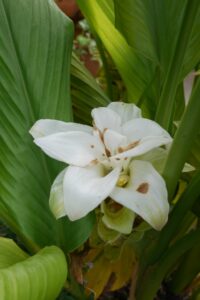When you think of the word turmeric, what comes to mind? Does your mind remember that common spice in your cabinet rack that adds a vibrant yellow color to the curry dish you make? For many, turmeric embodies that. Nevertheless, behind the curry-infused culinary spice and the golden color it is shining with, lies a deep history intertwined with culture, medicine, and spirituality across various parts of the globe. So let’s dive into this journey together and unravel the profound chapters of what is the history of turmeric usage.
Early Cultural Use

The turmeric plant, a stemless herb from the ginger family, first emerged in the fertile soils of South Asia around 4000 BC. Its usage and cultivation became widely established, particularly in the Indian subcontinent. The enormous significance of turmeric in Indian culture is evident from ancient times.
Turmeric root was ground into turmeric powder and was a common ingredient in Ayurvedic medicine. Lauded for its healing properties, it was used to combat various human diseases from chronic inflammatory diseases like rheumatoid arthritis to skin conditions and even chicken pox! The turmeric rhizome, leaves, and turmeric extracts were precious cogs of this traditional medicinal system.
Turmeric wasn’t just a medicinal plant, but it was also established as a dye plant due to its yellow color, similar to Indian saffron. Plus, in the Indian kitchen, turmeric was used to enhance the taste and appearance of Indian dishes, and in India pickle was incomplete without that hint of turmeric.
Turmeric in China and Far East
The turmeric plant, however, wasn’t just confined to the Indian sub-continent; the Chinese discovered this reddish-brown spice around 700 AD. The use of turmeric became a part of Traditional Chinese Medicine, where it was used as a dietary supplement to cure an array of ailments. Turmeric also found its footing in Southeast Asia, predominantly know for its tropical climates where the turmeric plant thrives.
Turmeric in Middle East and Africa
Journeying further west throughout history, the turmeric plant found its way to the Middle East around the 13th century. Its usage here was believed to have initiated with the trading activities during this era.
Shortly after its introduction to the Middle East, turmeric continued its journey, reaching the regions of North Africa. The culinary traditions of these regions warmly embraced this unique spice from the Southeast as an addition to their existing repertoire of flavors.
In both the Middle East and North Africa, turmeric was highly revered for its dual utility. On one hand, it served as a potent culinary spice, enriching dishes with its vibrant color and distinct flavor. It became a commonly used spice, often paired with black pepper in Middle Eastern cooking.
On the other hand, turmeric was also used for its medicinal properties. In Africa, it found a consistent place in traditional medicine as a natural remedy for various skin conditions. Turmeric’s usage in these regions showcased its versatility, as it transitioned seamlessly from kitchen shelves to medicine cabinets.
Turmeric in the West

It wasn’t much later until Turmeric traveled to Europe and Americas. Mary Randolph’s Virginia Housewife, an early influential American cookbook, featured turmeric. Turmeric and curcumin provided a distinct taste and color to the food.
In recent years, the West discovered turmeric as a dietary supplement. The National Institutes of Health and the National Library of Medicine highlights numerous studies showing its effectiveness against inflammatory bowel disease and other chronic diseases. Turmeric juice, turmeric paste, and turmeric supplements have become quite popular due to these beneficial effects.
Modern Usage of Turmeric
Fast forward to modern usage, turmeric is no longer just confined to being a curry powder in the Indian kitchen or an Ayurvedic supplement. It has become a global favorite, expanding its presence, from culinary realms to the heart of scientific research. Turmeric root and its derivative products like turmeric extracts and turmeric paste are being used in the pharmaceutical sector. Both food and drink companies are using turmeric to give its products like canned beverages a punch.
In fact, commercial curry powders available on supermarket shelves contain turmeric as the main ingredient. From antioxidant to anti-inflammatory effects, from healing wounds to inhibiting the toxic effects of certain substances, turmeric has proven its multi-fold values, making it one of the most turmeric widely cultivated around the world.
Future of Turmeric

The reign of turmeric appears set to continue shining brightly in the future. Its immense influence and applications, whether in a rich curry dish or as a potent dietary supplement, spans from India to South America and can simply not be undervalued.
Furthermore, ongoing research and clinical trials on turmeric’s effectiveness against chronic inflammatory diseases show promising results. This provides an optimistic outlook on turmeric’s possible future contributions to the medical field.
Simultaneously, established traditions such as Indian culture, Traditional Chinese Medicine, and Ayurvedic Medicine continue to uphold their reverence for turmeric’s importance. These cultural traditions and the tenacity of their practices help to keep the usage of turmeric in the limelight.
Collectively, these aspects point to a vibrant and gleaming future for turmeric. Irrespective of geographical or cultural boundaries, it is clear that the significance of turmeric will continue to grow and be appreciated in diverse ways worldwide.
What Is the History of Turmeric Usage? – Final Thoughts
In conclusion, the journey of turmeric throughout history is beautiful, diverse, and educative. From its humble beginnings as a turmeric plant cultivated in the warm South Asian environment to its widespread usage and recognition as a superfood and a significant tool in medicinal chemistry globally, turmeric has indeed come a long way.
What started as a treasure of Southeast Asia, today India produces the most turmeric worldwide. It is amazing to see how through the ages, the human race has managed to perceive and apply the immense powers locked within this small turmeric plant. The journey of turmeric does not just represent the journey of a spice, but through it, we are able to witness the journey of culinary traditions, medicine, and the human connection to nature.

